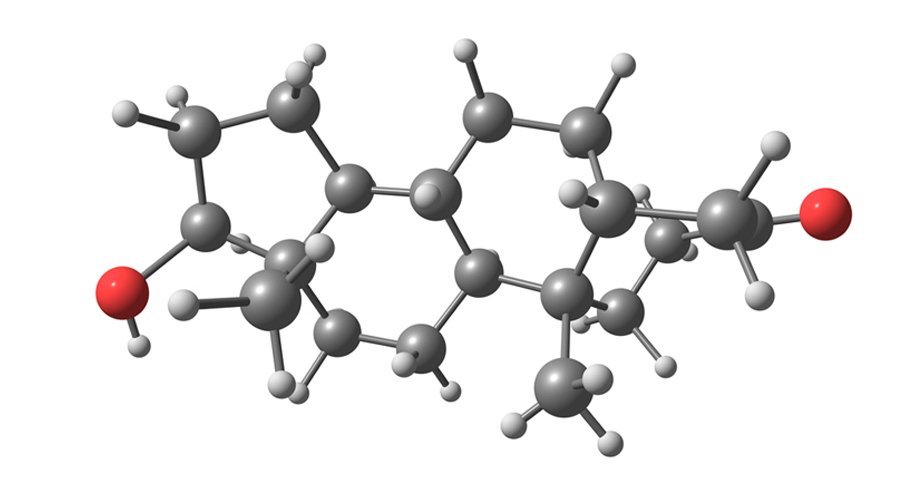
Page Contents
Hair loss affects thousands of men and women every year, and thousands of dollars are spent on hair loss treatments that don’t always work. As technology advances, new treatments become available to promote hair growth, and exosome therapy is one of these.
But what is exosome therapy? And, more importantly, can it truly help your hair loss? There is a lot to learn about if you’re thinking about using this to regrow hair.
What Is Exosome Therapy?
Exosome cells are microscopic particles estimated to be one-thousandth the size of your blood cells. Technically, exomes are extracellular vesicles made by mesenchymal stem cells.
Simply put, your body makes exosomes to send messaging signals for cell communication and as growth factors for certain cells. Unfortunately, as you age, your body makes fewer exosomes. This is part of what makes a person age.
Exosomes interact with your stem cells, causing your stem cells to switch into the ‘on’ position, which is another reason why your mesenchymal stem cells make them.
You may have plenty of stem cells in your body, but they may not be affecting your other cells the way they should. Exosome therapy will make sure your stem cells react the way they are supposed to by stimulating them.
It is for this reason that exosome therapy is similar to stem cell therapy, since both use stem cells to induce your hair follicles to produce new hair growth.
Exosomes, just like stem cell treatments, are also used for skin growth in patients with third-degree burns. It is even occasionally used for joint rejuvenation.
For hair restoration, exosome injections are given in multiple doses all over the scalp in the areas your hair follicles need assistance. In other cases, such as wound healing from burns, it is injected into the living tissue near the damage.
Exosome Extraction
There are two main ways exomes can be extracted. The first is similar to how platelet-rich plasma is extracted for that type of therapy. For platelet-rich plasma therapy, a patient’s blood is drawn.

They then run it through a centrifuge to separate it into its different parts. From this, the exosome cells are extracted, and your body makes new blood cells to replace the ones you lost.
However, in recent years, medicine has advanced enough to grow stem cells in a laboratory. This was done for stem cell therapy, but stem cells can also be used to manufacture the exosome, which is then extracted from them.
In short, there are stem cell-derived exosome cells and blood-derived exome cells. The stem cell-derived exosome treatment is more popular, since it is easier on your body due to not taking any of your blood.
Related Reading
How Does Exosome Treatment Compare?
One nice thing about using exosomes for hair regrowth is that it can be safely used with other hair loss treatments. Some dermatologists are quick to recommend things like finasteride, light therapy, or even hair transplants on top of your exosome treatments.
Using a combination of treatments can facilitate hair growth faster than any one treatment by itself. Multiple hair loss treatments can cover any possible cause of your hair loss to help you achieve the hair restoration you want.
The Studies
According to the National Library of Medicine, exosomes are a promising new approach to hair loss that seems to deliver good results with next to no adverse side effects.
However, they also make sure to say that more clinical trials and studies are necessary due to how new this hair treatment is. It is also possible there are hidden side effects of exosome therapy that don’t show up until later.
It is partially for this reason that this hair loss treatment is not yet FDA-approved. The lack of study also means there is no guarantee how long the exosome hair loss treatment will last, even if it does work.
This is not as good as other hair loss treatments that have measurable growth factors and are proven to help your hair growth cycle (Minoxidil) or are used to treat hair loss due to alopecia.
Some hair restoration treatments have been proven in literally dozens of clinical studies to cause hair growth in patients that use them. Therefore, this treatment doesn’t quite measure up to other things in this area.
Side Effects
As mentioned, exosome therapy for hair loss hasn’t been around long enough to know if there are any long-term effects. However, there are a few known side effects that often accompany exosome therapy. Some adverse effects are:
Mild pain and swelling at the injections site that can last up to 48 hours
Tenderness of the scalp for up to a week
Mild scarring at the injection site
Bleeding and/or slight infection of the injection site
If any of these linger, you may be told to take an over-the-counter acetaminophen. Your dermatologist will have you stop taking NSAIDs, which are non-steroidal anti-inflammatory drugs that can interfere with the exosome therapy for hair loss.

Also, you are told to avoid being active for 24 to 48 hours following your treatment, though it is not shared why patients are supposed to do that.
The FDA has warned that some places offer this therapy for hair loss without maintaining proper cleanliness standards, potentially resulting in other side effects.
On the other hand, exosomes are not only capable of helping with natural hair growth, but they are also used for other bodily functions. Some of these include heart health, your immunogenic response, and healing inflammation.
These things can help your hair follicle cells indirectly, and also benefit your general health, which decreases the odds of adverse effects.
This is far better than the long list of side effects of other treatments. Some side effects of other treatments can negatively affect your hair growth cycle while they try to help your hair grow. Here, exosome treatments are the clear winner.
The Price
Exosome hair loss therapy is quite expensive. Since this treatment for hair loss doesn’t have FDA approval, your insurance is less likely to cover the cost, which won’t help you afford it.
Since few places have the right equipment to do this treatment for hair loss, it is fairly expensive for your dermatologist to get it set up. This translates into a high cost when you get the treatment.
In fact, the estimated cost of exosome therapy for hair loss is currently between $3,000 and $10,000. This puts it at around the same price as hair transplant surgery.
This is far more expensive than almost any other hair restoration treatment. It is even more so if you need another round of injections.
Considering other treatments have the same growth factors for most people and are just a fraction of the cost, exosomes aren’t something many people can afford.
The Results
Most people who use this hair loss treatment start seeing results somewhere between two to three months after their injections. However, the bulk of the hair growth occurs about 6 months after your treatment.
At the three-month mark, your dermatologist may want you to come in so they can examine your scalp. Based on the growth factors they see, they may recommend more of this stem cell-related therapy for your hair loss.
As with any other treatment, catching your hair loss at its earlier stages will help ensure your hair grows when you have the exosome injections.
Compared to other treatments for androgenetic alopecia, this is average. Hair regeneration always takes time, which is why you are usually recommended to give a hair loss treatment six months before you expect to see results.
Final Thoughts
All in all, exosome therapy for hair loss is very promising. However, due to its price and how little is known about it, I would only recommend this hair loss treatment for people who have tried other things for natural hair regrowth with no success.
If you’ve used exosome therapy for hair loss, I’d love to know what you thought of it. Did it help your hair? Would use say it was worth the price?






